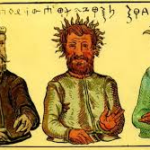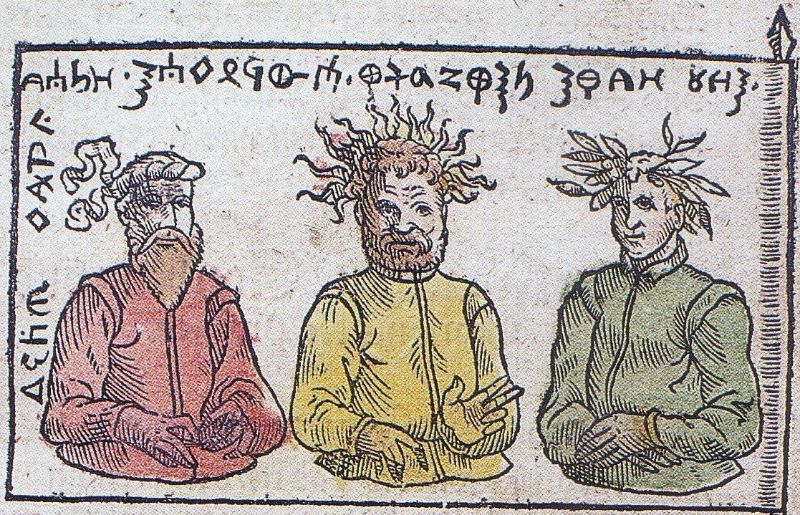Menuo is a fascinating figure in Lithuanian mythology, representing the moon and its various phases. The name “Menuo” translates to “moon” in Lithuanian, and it embodies not only the celestial body but also the rich traditions and beliefs surrounding it in ancient Lithuanian culture. As a powerful symbol, Menuo is associated with the cycles of nature, the passage of time, and the rhythm of life itself. Understanding Menuo requires delving into the myths, rituals, and cultural significance that this lunar deity holds for the Lithuanian people.
Mythological Origins of Menuo
The origins of Menuo can be traced back to the early pagan beliefs of the Lithuanian people. In these ancient times, the moon was seen as a vital force that influenced the natural world. Many myths revolve around the moon’s relationship with the sun and other celestial bodies. One popular story tells of a cosmic battle between Menuo and the sun, who is often personified as Saule. This battle symbolizes the eternal struggle between light and darkness, day and night. The outcome of these battles was thought to determine the changing seasons and the agricultural cycles that were crucial for survival.
 Medziojna
MedziojnaIn Lithuanian mythology, Menuo is often depicted as a male deity, which is somewhat unique compared to other cultures where lunar deities are frequently female. This portrayal reflects the duality of the moon as both a nurturing and a powerful force. The moon was believed to be a guardian of the night, watching over people as they slept and guiding them through the darkness. Rituals were often performed to honor Menuo, especially during significant lunar phases like the full moon and the new moon.
The Relationship Between Menuo and Nature
Menuo’s influence extends deeply into the natural world. The changing phases of the moon were believed to affect various aspects of life, from agriculture to human behavior. For instance, it was common for farmers to plan their planting and harvesting activities according to the lunar calendar. Many believed that planting crops during a full moon would lead to a more abundant harvest, while a new moon was seen as a time for rest and preparation.
- Full Moon: Associated with growth and abundance, a time for planting.
- New Moon: A period of rest and introspection, ideal for planning.
- Waxing Moon: Symbolizes increasing energy and activity, a time for taking action.
- Waning Moon: Represents a time of reflection and letting go, suitable for releasing negativity.
This deep connection to nature highlights how Menuo was not just a celestial figure but also a guiding force in the lives of the Lithuanian people. Many rituals were centered around the lunar cycle, emphasizing the importance of harmony with the natural world. The moon was seen as a teacher, reminding people of the cycles of life and the need to adapt to the changing seasons.
 Medeina
MedeinaRituals and Celebrations Honoring Menuo
Rituals honoring Menuo were an essential part of Lithuanian culture, especially in rural communities. These ceremonies often coincided with significant lunar phases and were performed to ensure good fortune, health, and prosperity. One of the most notable celebrations was the full moon festival, where communities would gather to honor the moon’s light and its life-giving properties. People would light bonfires, dance, and sing traditional songs, creating a vibrant atmosphere filled with joy and reverence.
During these festivals, offerings were often made to Menuo, such as grains, fruits, and other items that symbolized abundance. This practice reflected a deep sense of gratitude towards the moon for its role in providing sustenance and guiding the cycles of life. It was believed that by honoring Menuo, people could secure his favor and ensure a bountiful harvest for the coming year.
The Role of Women in Lunar Rituals
Women played a significant role in the rituals honoring Menuo. Traditionally, women were seen as the caretakers of the household and the keepers of wisdom regarding agricultural practices. They often led ceremonies, especially those related to fertility and the nurturing of crops. The association of women with the moon is not unique to Lithuanian culture; it is a common theme found in many mythologies around the world. In Lithuania, this connection is celebrated and respected, with women being viewed as the embodiment of lunar qualities such as intuition, nurturing, and emotional depth.
 Linksmine
Linksmine- Fertility Rites: Women performed rituals to invoke Menuo’s blessings for fertility, both in crops and in childbirth.
- Healing Ceremonies: Many healing practices were tied to the lunar phases, with women often leading these sacred rites.
- Storytelling: Women passed down myths and stories about Menuo, preserving the cultural heritage for future generations.
These rituals not only honored Menuo but also strengthened community bonds. Women would gather to share knowledge and experiences, fostering a sense of unity and support among each other. This aspect of Lithuanian culture highlights the importance of the moon in shaping social structures and relationships within the community.
Menuo in Modern Lithuanian Culture
Today, the figure of Menuo continues to hold significance in modern Lithuanian culture. While many of the ancient rituals may have faded, the reverence for the moon persists in various forms. The lunar calendar is still observed by some, influencing agricultural practices and seasonal celebrations. Additionally, the stories and myths surrounding Menuo are being revitalized through cultural festivals and artistic expressions, keeping the spirit of this lunar deity alive.
In contemporary Lithuanian art and literature, Menuo is often referenced as a symbol of mystery and beauty. Poets and writers draw inspiration from the moon’s ethereal qualities, using it as a metaphor for love, longing, and the passage of time. The moon’s phases are depicted in paintings, sculptures, and performances, showcasing its enduring impact on the Lithuanian imagination.
Educational Initiatives and Cultural Preservation
Efforts to preserve and promote Lithuanian mythology, including the stories of Menuo, have gained momentum in recent years. Educational programs in schools are increasingly incorporating lessons on traditional beliefs and practices, helping younger generations connect with their cultural heritage. Museums and cultural centers are also organizing exhibitions and workshops that explore the significance of lunar deities and their roles in Lithuanian mythology.
- Workshops: Interactive sessions that teach traditional rituals and the meanings behind them.
- Exhibitions: Displays showcasing art and artifacts related to Menuo and lunar mythology.
- Storytelling Events: Gatherings where myths and legends about Menuo are shared, fostering community engagement.
These initiatives not only celebrate Menuo but also encourage a deeper understanding of Lithuania’s rich cultural history. By engaging with these traditions, people can appreciate the wisdom of their ancestors and the lessons that nature imparts through the cycles of the moon.
Menuo and Its Symbolism
The symbolism of Menuo extends beyond its role as a lunar deity. In Lithuanian culture, the moon represents a myriad of concepts, including change, reflection, and spiritual growth. The moon’s phases serve as a metaphor for the cycles of life, illustrating the importance of embracing change and the inevitability of transformation. This perspective encourages individuals to reflect on their experiences and learn from them, fostering personal growth.
Moreover, Menuo embodies the concept of duality, much like the moon itself, which can be both illuminating and obscuring. This dual nature is reflected in various aspects of life, such as joy and sorrow, light and darkness, and the known and the unknown. The ability to navigate these dualities is seen as a vital skill, allowing individuals to find balance and harmony within themselves and their surroundings.
The Moon as a Guide
In many ways, Menuo serves as a guide for those seeking direction in their lives. The moon’s light has historically provided illumination in the darkness, symbolizing hope and guidance during challenging times. Many people turn to the moon for inspiration, using its cycles as a framework for personal reflection and goal-setting. The full moon, in particular, is often seen as a time for manifestation, while the new moon is regarded as a period for setting intentions and beginning anew.
- Manifestation: The full moon is a time to focus on what one wants to bring into their life.
- Intention Setting: The new moon is an opportunity to set new goals and intentions.
- Reflection: The waning moon encourages introspection and letting go of what no longer serves.
This guidance from Menuo encourages individuals to be mindful of their choices and the impact they have on their lives and the world around them. By aligning with the rhythms of nature, people can cultivate a deeper connection to themselves and their environment, fostering a sense of peace and purpose.
Menuo is a central figure in Lithuanian mythology, representing not only the moon but also the profound connections between nature, culture, and spirituality. Through its myths, rituals, and symbolism, Menuo offers insights into the human experience, encouraging reflection, growth, and harmony with the natural world. As Lithuania continues to celebrate its rich cultural heritage, Menuo remains a guiding light, illuminating the path for future generations to explore and embrace their roots.
